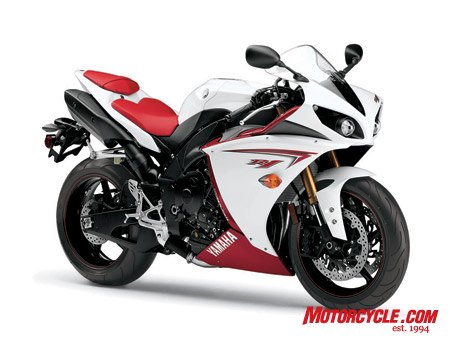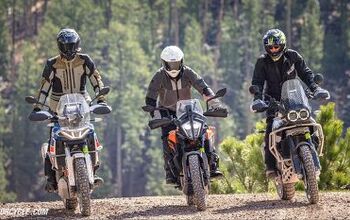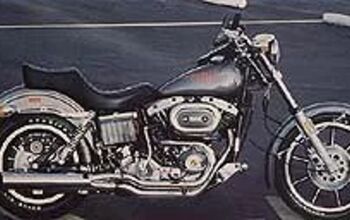Motorcycle.com

After providing as much speculation, information and product renderings to readers as possible, we can finally spill the beans on the much anticipated R1. Yamaha has pulled out all the stops with a ground-up re-do of its iconic literbike. New bits abound, including its styling, chassis and, most intriguingly, a MotoGP-derived firing order of its innovative engine.
In the top class of roadracing, engineers have battled with harnessing the huge amounts of power and getting it to the ground efficiently. In 2004, Yamahas GP engineers introduced an uneven firing interval for its inline four-cylinder M1 with whats called a cross-plane crankshaft. Instead of the two outer and two inner pistons rising and falling together, the R1s engine has individual cylinders firing 90 degrees apart from each other. This eliminates the torque fluctuation of a typical four-cylinder mill, plus it gives the Yamamotor a very distinctive exhaust note similar to that of Valentino Rossis racebike.
It gives a much more precise feeling in the throttle action, says Yamahas product planner Derek Brooks. You fill like you can sense that edge of traction.
The engine still displaces 998cc, but it does so with a bigger bore and a shorter stroke; its rev limit remains at 13,750 rpm. Its architecture appears to be even more compact than previous. It inhales through Mikuni throttle bodies with secondary injectors and Yamahas electronic throttle and variable length intakes (crossing over at 9400 rpm). New for 09 is addition of three throttle control maps selectable via a switch on the right handlebar. The default setting is a typical setup, while the A mode delivers extra midrange power. Softer response is available from the B setting.
"Attention-getting style has been an integral part of the R1s desirability since its debut in 1998, and it continues with this latest version"
Internally, the engine has several high-tech bits. Aluminum pistons are forged for strength, squeezing the intake mixture at a high 12.7:1 ratio. Connecting rods are fracture-split for added durability, while titanium intake valves are light in weight. A coupling-type balancer rotates opposite to the crankshaft to quell vibration. A ramp-type slipper clutch eases high-rpm downshifts.The R1s chassis is also slathered with the New Brush. The frame consists of a cast-aluminum forward section mated to Controlled-Fill die-cast outside rails and extruded inside rails. Like the08 R6, the subframe is made from magnesium for reduced weight from the outer edges of the bike. The aluminum swingarm is also new. Rake, trail and wheelbase are unchanged from 24.0 degrees, 4.0 inches, and 55.7 inches, respectively.
The 43mm inverted fork is by Yamaha subsidiary Soqi, and its notable for having separate circuits for rebound and compression damping in each fork leg, said to be like the M1 GP bike. The Soqi shock has provisions for high- and low-speed compression damping, rebound damping, and in a nice surprise, a hydraulic preload adjuster.
Another user-friendly addition to the R1 is adjustable footpegs. Those needing extra cornering clearance can relocate them 15mm higher and 3mm further rearward. Instrumentation now includes a handy gear-position indicator, something frequently requested by consumers.
Attention-getting style has been an integral part of the R1s desirability since its debut in 1998, and it continues with this latest version. Its led by a pair of projector-beam headlights flanked by ram-air intakes. An abbreviated side fairing features what Yamaha calls a layered body design that is said to better dissipate heat from the engine and radiators. Surprisingly, the The One continues with undertail exhaust pipes, which is part of the reason why it has a lofty 32.8-inch seat height that might annoy Tom Cruise.
Interestingly, Yamaha has quoted a wet-weight figure for the R1 rather than the usual dry weight. If the quoted figure of 454 lbs is to be believed, the bike has lost about 10 lbs compared to the previous version.
If you want one of these for your own, you have a choice of four color schemes. The Team Yamaha Blue and Cadmium Yellow versions retail for $12,390, which is a sizable bump of nearly $700 compared to the 08 models. An extra $100 will buy a Raven (black) model with red accents or a white/red combo reminiscent of the original R1. Coming to a dealer near you this January.

Motorcycle.com presents an unrivaled combination of bike reviews and news written by industry experts
More by Motorcycle.com Staff































Comments
Join the conversation